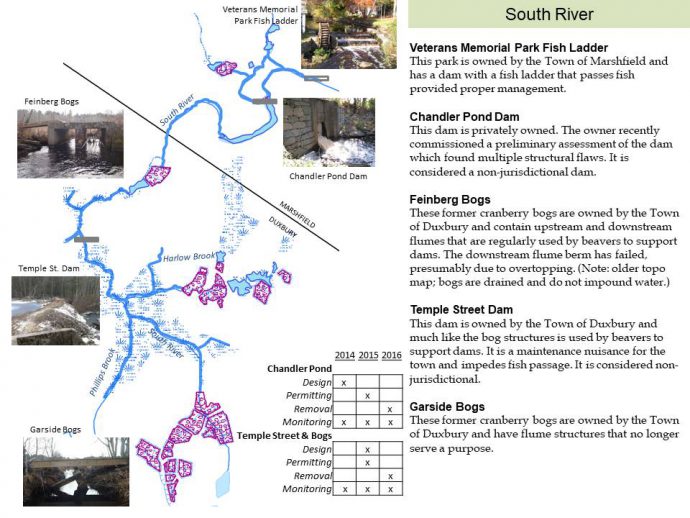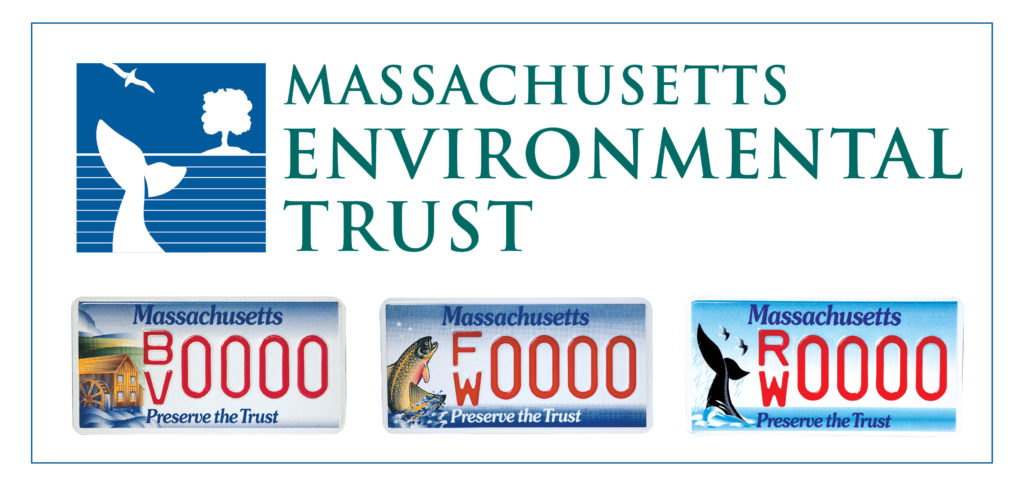Thanks to people purchasing the state’s three environmentally-themed specialty license plates, two of our rivers, the Third Herring Brook and the South River, will be receiving funding to help restore their health! These grants from the Massachusetts Environmental Trust (MET) to 15 projects across the state will restore aquatic habitat, rivers and watersheds, monitor water quality, protect endangered species and promote environmental stewardship.
Restoring the Third Herring Brook
The North and South Rivers Watershed Association was awarded $28,500 to document, scientifically monitor, and tell the story of the physical and biological response of the Third Herring Brook river system after removing the Tack Factory Dam.
The Third Herring Brook restoration project, which is a Massachusetts Division of Ecological Restoration Priority Project, has been an ongoing effort over the last 10 years that reached a critical milestone this past December with the removal of the Tack Factory Dam, the second dam to be removed on this brook, reconnecting 8.4 miles of the Third Herring Brook to the North River, which flows into Massachusetts Bay.
This project will measure the success of river restoration efforts on the Third Herring Brook after the removal of the Tack Factory Dam and provide a video that showcases restoration efforts from early inception to measuring success as a model for other communities. Our goal with this project is to document, scientifically monitor, and tell the story of the physical and biological response of the Third Herring Brook river system after the Tack Factory Dam was removed and more than 8 miles of instream habitats become undammed, allowing river herring and Eastern Brook Trout to move and migrate freely.
Restoring the South River
The Town of Duxbury was awarded $10,000 in support of a study to understand the effects that removing the Temple Street dam might present. This project is a step in a series of steps that has been taken by the NSRWA and the towns of Marshfield and Duxbury to restore the South River’s health.
In 2014 the NSRWA and its partners – Massachusetts Bays Program and the Towns of Duxbury and Marshfield – successfully nominated the South River to the Massachusetts Division of Ecological Restoration for Priority Restoration Project status to examine restoring the South River by removing 5 obstructions that include dams and old cranberry bog diversions that fragment the South River.
The designation enabled technical and financial support ($40,000 in 2015) to review water flow and flooding conditions under various scenarios at Chandler Pond and Veteran’s Park dam. The resulting study indicated that existing flooding occurs with or without dams at Cross Street but would be lessend somewhat if the Veteran’s Park dam was removed. The Veteran’s Park dam creates a backwater effect that excacerbates flooding conditions upstream at Cross St.
The NSRWA has been conducting volunteer herring counts at the Veteran’s Park dam for many years. Counters have observed roughly 1,000 river herring arriving at the base of the dam and fish ladder each spring but the number of herring migrating up the ladder has been in single digits and zero last year.
Recent efforts this year, working in partnership with the town of Marshfield Conservation, DPW and the state’s Division of Marine Fisheries have resulted in limited improvements at the Veteran’s Park fish ladder this year with 57 fish being seen be able to navigate over the dam. This took considerable effort on behalf of the town staff as the fish ladder requires daily maintenance in order to function even in this limited fashion.
Upstream of Veteran’s Park dam this spring we surveyed the river and found trees down and vegetation overgrowing the river channel. This fall with support from the Mass Division of Marine Fisheries and the Marshfield DPW and Conservation Commission we hope to enlist volunteers to help us to judiciously remove some of the vegetation that might be blocking herring access above the Veteran’s Park dam. If you are interested in helping please contact our office.
Ultimately we believe that removing dams that are not needed anymore is the best approach to restoring a river to health and allowing fish to migrate freely to their natural habitats.



